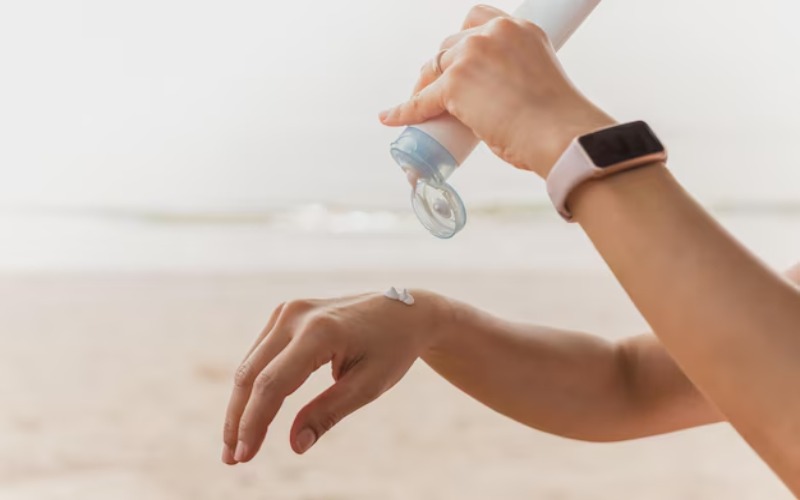Is sunscreen really bad for you?

Sunscreen has become a staple of skincare routines around the world, touted as a frontline defense against skin cancer, premature aging and harmful UV rays. However, in recent years, concerns have emerged about the safety of certain ingredients, prompting questions: Is sunscreen really bad for you? Let’s explore the science behind safety, the potential risks, and whether these concerns should outweigh its benefits.
The importance of sunscreen
Dermatologists and health organizations, including the American Academy of Dermatology (AAD) and the World Health Organization (WHO), have long advocated the use of sunscreen. For what? Because exposure to ultraviolet (UV) rays is a leading cause of skin cancer, which remains the most common type of cancer worldwide. UV exposure also contributes to premature aging of the skin, leading to the appearance of wrinkles, age spots and loss of elasticity.
The main types of sunscreen – chemical and mineral – both aim to block or absorb these harmful rays. Chemical sunscreens (like oxybenzone and avobenzone) absorb UV rays, while mineral sunscreens (like zinc oxide and titanium dioxide) create a physical barrier that reflects UV rays. Both types protect the skin, but recently chemical sunscreens have raised concerns about their safety for both humans and the environment.
Ingredient Safety Concerns: What Does the Research Say?
1. Oxybenzone and hormonal disruption
One of the most controversial ingredients is oxybenzone, which some studies suggest may disrupt hormonal function by mimicking estrogen in the body. Concerns grew after studies showed oxybenzone could be absorbed into the bloodstream. However, although some animal studies found hormonal effects, the concentration of oxybenzone used in these studies was significantly higher than what would typically be absorbed from sunscreen. The FDA and other health agencies, while cautious, have not yet confirmed that there is a definitive risk to humans at regular exposure levels.
2. Environmental impact and damage to coral reefs
Research has shown that certain chemical sunscreens, including oxybenzone, can harm coral reefs and marine ecosystems. For this reason, popular tourist destinations such as Hawaii, Key West and parts of Mexico have banned sunscreens containing oxybenzone and octinoxate, in an effort to protect coral reefs from bleaching. In response, many brands are now offering “reef-safe” options without these chemicals.
3. Nanoparticles in mineral sunscreens
Mineral sunscreens are generally considered safer, but they are not without controversy. Some mineral-based sunscreens use nanoparticles (extremely tiny particles) of zinc oxide or titanium dioxide to make the product less visible on the skin. Although studies suggest that nanoparticles do not penetrate deeply into the skin, some people worry that they pose a risk if inhaled, especially in spray form. More research is needed to fully understand the impact, although current data suggests that nanoparticles in sunscreens are generally safe when applied to the skin (American Cancer Society).
The benefits of sunscreen: proven protection against cancer and aging
Despite these concerns, science-based benefits should not be overlooked. The Skin Cancer Foundation reports that regular use of sunscreen can reduce the risk of melanoma, the deadliest form of skin cancer, by 50%. It also prevents photodamage, which not only preserves the skin’s appearance, but also slows visible signs of aging, including fine lines, wrinkles, and discoloration.
Choosing the right sunscreen: tips for safe and effective use
If concerns about the ingredients keep you from using it, here are some ways to stay protected and avoid potential risks:
- Opt for mineral-based sunscreens
Mineral sunscreens (zinc oxide and titanium dioxide) are generally safe for sensitive skin and are less likely to cause irritation. They are also reef safe, making them a great choice for eco-conscious consumers. - Look for “Reef-Safe” labels
Choose products labeled “reef safe” if you plan to swim in oceans, rivers, or lakes, or if you simply want a more environmentally friendly product. - Avoid spray sunscreens containing nanoparticles
If you prefer a spray, be aware of the risks of inhalation. Instead, consider using creams or lotions, or spray them on your hands first before applying them to your face. - Use broad-spectrum protection with SPF 30 or higher
Broad-spectrum sunscreens protect against UVA and UVB rays, providing the most comprehensive protection. Look for SPF 30 or higher for effective coverage (AAD). - Reapply regularly
Many people forget that sunscreen is not a one-size-fits-all solution. It should be reapplied every two hours or immediately after swimming or sweating heavily.
Final Verdict: Is Sunscreen Bad for You?
The short answer? No, sunscreen is not bad for you when used as directed. Although some ingredients have sparked debate over their health and environmental impacts, the benefits of regular sunscreen use far outweigh the risks. Without sunscreen, the dangers of UV rays are much greater: skin cancer, accelerated aging and serious skin damage. That said, consumers should feel empowered to make informed choices, opting for products that align with their health priorities and environmental values.
Ultimately, it remains a safe, accessible and effective tool for preventing skin damage. The key is to choose the right type, use it correctly, and stay informed as new research and products become available.



Leave a Comment